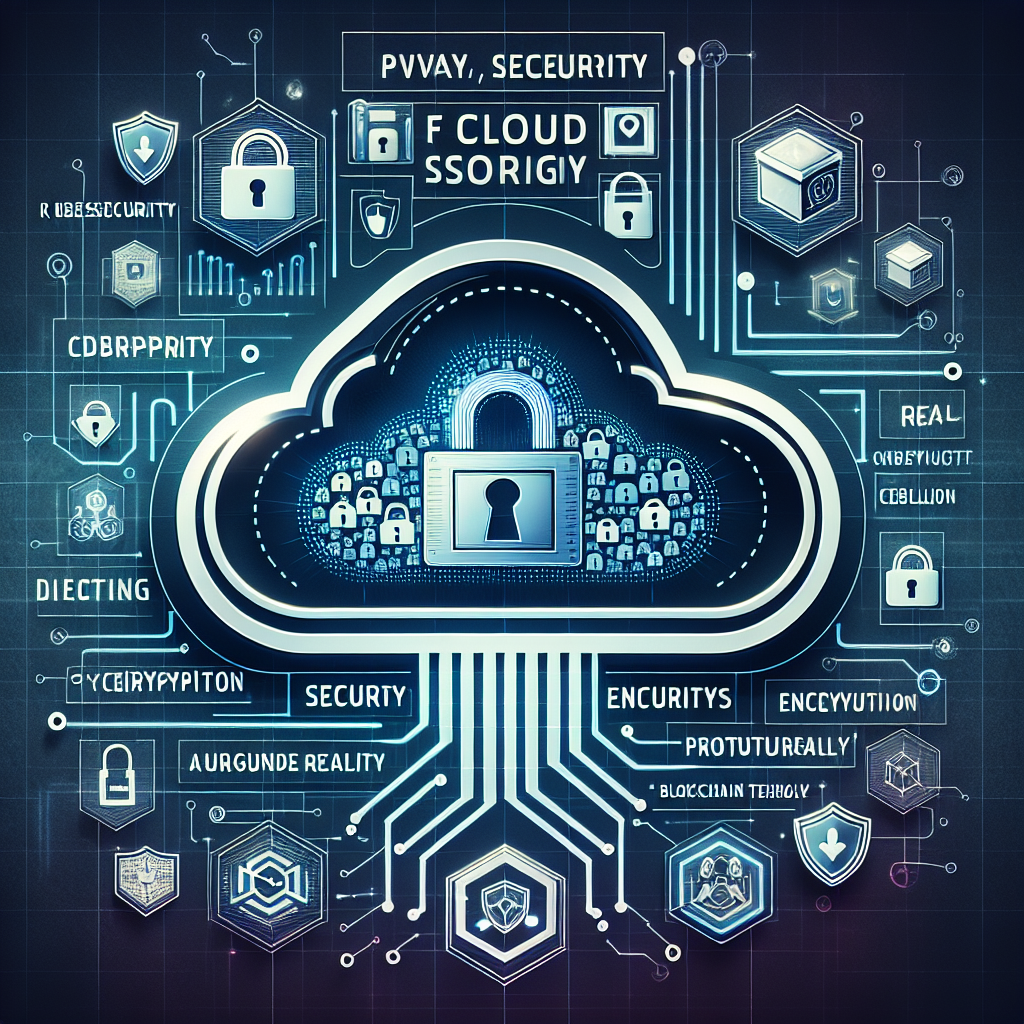Unlock encrypted content
Please enter your SSCE key to initiate on-the-fly decryption.
Decryption key: (Click cancel if you don't have the key)
Copied link to clipboard.
This feature is unavailable for free accounts. Upgrade now and enjoy all Premium benefits.
Go Premium!
This feature is unavailable for free accounts. Upgrade now and enjoy all Premium benefits.
Go Premium!
Please open this page in browser ( Google Chrome or Safari ) to use this feature.
Open In Browser
The Future of Data Management: Exploring Efficient Technologies in File Transfer and Storage.
Random related video for this blog.
Copied share link to clipboard.
In today's digital landscape, efficient data management is essential for individuals and businesses alike.
Cryptocurrency and Data Transfer
Cryptocurrency has revolutionized the financial sector, but its underlying technology, blockchain, is proving to be a game-changer in various domains, including data transfer. The decentralized nature of blockchain allows for secure and transparent transactions, which can be applied to data management. For instance, using cryptocurrency for data transfer could enable direct peer-to-peer transactions, eliminating the need for intermediaries and reducing costs associated with traditional data transfer methods. Consider a scenario where a company needs to send sensitive data files to a client. By utilizing a blockchain-based platform, they can ensure that the data remains secure and is only accessible by authorized parties. This method not only enhances security but also provides a transparent audit trail, allowing both parties to verify the integrity of the data being transferred. Furthermore, the merging of cryptocurrency and data transfer facilitates innovative solutions like micropayments for data usage. Users can pay small amounts of cryptocurrency to access specific data files or services, promoting a more flexible and user-centric approach to data management. This could be particularly useful in scenarios where users only need to access data intermittently, making it a cost-effective solution. As businesses increasingly adopt cryptocurrency for transactions, the potential for efficient data transfer utilizing this technology is immense. With the rise of decentralized finance (DeFi) and smart contracts, we can expect to see more integration of these technologies in the realm of data management, paving the way for a new era in secure data transmission.File Permissions and Data Security
File permissions are a critical aspect of data security, especially in environments where multiple users require access to shared files. Properly managing file permissions ensures that sensitive data remains protected while allowing collaboration among teammembers. In enterprise settings, role-based access control (RBAC) is commonly implemented to grant permissions based on user roles, which can significantly reduce the risk of data breaches. For example, in a research institution, different teams may be working on various projects that require access to shared data. By implementing a robust file permissions system, researchers can ensure that only authorized personnel can access sensitive data related to their projects while maintaining the integrity of the overall dataset. This not only protects the data but also fosters a collaborative environment where researchers can work together without compromising security. Moreover, advancements in file permission technology are making it easier for organizations to manage access rights dynamically. Solutions like integrated identity management systems allow for real-time updates to file permissions based on user activity and context, ensuring that access is granted or revoked as necessary. This level of granularity in file permissions is vital for organizations handling sensitive information, such as healthcare data or financial records. As data breaches become more prevalent, the importance of effective file permission management cannot be overstated. Organizations must prioritize investing in technologies that enhance data security through robust file permission systems to safeguard their valuable information assets.
Genetic Engineering and Data Management
The intersection of genetic engineering and data management presents a unique set of challenges and opportunities. As genetic engineering advances, the amount of data generated from genomic research is exponentially increasing. This surge in data necessitates efficient data management solutions to store, analyze, and share genomic information securely. For instance, consider a biotech company conducting research on gene editing techniques. They generate vast amounts of genomic data that must be stored securely while remaining accessible to researchers. Utilizing cloud storage solutions, such as those offered by FileLu, can facilitate the management of this data, providing scalable storage options that can grow with the organization's needs. Furthermore, advanced encryption methods can ensure that sensitive genetic data is protected from unauthorized access. Additionally, as genetic data becomes more integrated into healthcare systems, the need for data synchronization across platforms is critical. Ensuring that genomic data is consistently updated and accessible across different systems can enhance collaboration among researchers and clinicians, ultimately leading to better patient outcomes. Technologies that enable seamless data synchronization can help bridge the gap between research and clinical application, allowing for more efficient use of genetic information in medical practices. As the field of genetic engineering continues to evolve, so too will the need for innovative data management solutions. Organizations must stay ahead of the curve by adopting technologies that allow for efficient data transfer, secure storage, and robust data synchronization to harness the full potential of genomic research.Efficient Data Synchronization Techniques
Data synchronization is crucial for ensuring that information remains consistent across multiple devices and platforms. In a world where remote work is becoming increasingly common, efficient data synchronization techniques are essential for maintaining productivity and collaboration. Technologies that facilitate real-time data synchronization enable users to access the most up-to-date information from anywhere, reducing the risk of errors and miscommunication. For example, consider a marketing team working on a campaign that requires input from various stakeholders. Using a file synchronization service, team members can collaborate on documents in real-time, ensuring that everyone is on the same page. These tools not only enhance collaboration but also streamline workflows, allowing teams to focus on their core tasks rather than managing version control issues. Moreover, advancements in synchronization technology, such as FileLuSync, provide users with the ability to automatically sync files across devices, ensuring that important documents are always accessible. This feature is particularly beneficial for professionals who travel frequently or work from multiple locations, as it eliminates the need to manually transfer files between devices. As organizations increasingly rely on data-driven decision-making, the importance of efficient data synchronization cannot be overstated. By adopting advanced synchronization technologies, businesses can enhance collaboration, improve productivity, and ensure that critical information is always accessible to those who need it.Renewable Energy Technology in Data Management
The integration of renewable energy technology into data management practices is a growing trend, driven by the need for sustainable solutions. Data centers, which consume vast amounts of energy, are increasingly looking to renewable energy sources to power their operations. By utilizing solar, wind, or hydroelectric power, data centers can significantly reduce their carbon footprint while maintaining high levels of performance and reliability. For instance, a large data center may implement solar panels on its rooftops to generate clean energy. This not only helps reduce operational costs but also aligns with corporate sustainability goals. Additionally, using renewable energy can enhance the resilience of data centers, as they become less dependent on traditional power grids that may be vulnerable to outages. Furthermore, the adoption of renewable energy technology in data management extends beyond just powering data centers. Organizations can leverage renewable energy sources to power their entire IT infrastructure, enabling them to operate sustainably while also reducing energy costs. This holistic approach to energy management is becoming increasingly important as businesses strive to meet environmental regulations and consumer expectations for sustainability. As the demand for data storage and processing continues to grow, the integration of renewable energy technology into data management practices will play a crucial role in shaping the future of the industry. Organizations that prioritize sustainability in their data management strategies will not only contribute to a healthier planet but also position themselves as leaders in the evolving digital landscape.File Streaming and Efficient Data Access
File streaming technology has transformed the way we access and share data, enabling users to interact with large files without the need for lengthy downloads. This technology is particularly beneficial in scenarios where users need to access audio or video files quickly, as it allows for seamless playback without interruptions. For example, consider a music streaming service that allows users to listen to audio files on demand. By utilizing file streaming technology, the service can deliver high-quality audio content to users without requiring them to download entire albums. This not only enhances the user experience but also reduces the strain on bandwidth, as files are streamed only as needed. Moreover, file streaming technology can be applied to various industries beyond entertainment. In education, for instance, online learning platforms can leverage streaming to deliver lectures and course materials efficiently. Students can access video lectures in real-time, enabling a more interactive learning experience. This approach also allows educators to reach a wider audience, as students can participate from anywhere in the world. As file streaming technology continues to evolve, we can expect to see more innovative applications across different sectors. By prioritizing efficient data access through streaming, organizations can enhance user experiences, improve engagement, and optimize resource utilization.Secure Data Transmission Practices
In an era where data breaches are increasingly common, secure data transmission practices are vital for protecting sensitive information. Organizations must implement robust security measures to ensure that data is transmitted safely over networks, particularly when dealing with confidential or proprietary information. One effective approach to secure data transmission is the use of encryption. By encrypting data before transmission, organizations can ensure that even if the data is intercepted, it remains unreadable to unauthorized parties. This is especially important for businesses that handle sensitive customer information, such as financial records or personal data. For example, a financial institution may use encryption to secure transactions between its servers and clients. By employing advanced encryption protocols, the institution can protect its customers' data and maintain their trust. Additionally, using secure communication channels, such as Virtual Private Networks (VPNs), can further enhance the security of data transmission, providing an additional layer of protection against potential threats. As cyber threats continue to evolve, organizations must stay vigilant in their approach to secure data transmission. Investing in the latest security technologies and adopting best practices for data protection will be essential for safeguarding valuable information and maintaining the integrity of business operations.Conclusion
In conclusion, the landscape of data management is rapidly evolving, driven by advancements in technology and the increasing demand for efficient, secure solutions. From leveraging cryptocurrency for data transfer to implementing robust file permissions and exploring the intersection of genetic engineering and data management, organizations must stay ahead of the curve to remain competitive. As we continue to embrace renewable energy technology and file streaming innovations, the importance of secure data transmission practices cannot be overstated. By prioritizing these elements in their data management strategies, organizations can enhance collaboration, improve efficiency, and safeguard sensitive information. In this ever-changing digital landscape, the key to success lies in adopting cutting-edge technologies and practices that not only meet current demands but also anticipate future challenges. Embracing these advancements will empower organizations to thrive in the dynamic world of data management.Frequently Asked Questions (FAQs)
Question: What is the importance of file permissions in data security? Answer:
File permissions ensure that only authorized users can access sensitive data, reducing the risk of breaches.
Question: How can cryptocurrency enhance data transfer security? Answer:
Cryptocurrency utilizes blockchain technology, providing secure, transparent transactions without intermediaries.
Question: What are the benefits of file streaming technology? Answer:
File streaming allows for quick access to large files without downloads, optimizing bandwidth and user experience.
By Amelia Isabella.
Email: [email protected]
Related
Advanced File Transfer and Storage Solutions: Enhancing Efficiency and Security
July 6, 2023
Read More
The Internet of Medical Things (IoMT): Revolutionizing Healthcare with Technology
July 6, 2023
Read More
Cutting-Edge Innovations: Exploring the Exciting World of Augmented Reality, Cyborgs,...
July 6, 2023
Read More
Biotechnology Collaborative: Revolutionizing Industries with Advanced Technologies
July 6, 2023
Read More
Internet of Medical Things (IoMT): Revolutionizing Healthcare through Connectivity and...
July 6, 2023
Read More
Popular
The Future of Digital Transformation: Exploring Smart Homes, Efficient File...
November 30, 2025
Read More
Latest
The Future of Digital Transformation: Exploring Smart Homes, Efficient File...
November 30, 2025
Read More
Exploring the Benefits of Cloud Storage and Innovative Technologies in...
November 26, 2025
Read More
The Future of Technology: Exploring Biohacking, Space Tourism, and Digital...
November 23, 2025
Read More
The Future of File Sharing: Streamlined Workflows for Photographers and...
November 19, 2025
Read More
Exploring the Intersection of Technology: From Cybersecurity to Augmented Reality...
November 16, 2025
Read More
The Future of File Management: Embracing Edge Computing and Efficient...
November 12, 2025
Read More
The Future of File Sharing: Exploring User-Friendly Solutions and Data...
November 5, 2025
Read More
The Future of Cloud Storage: How FileLu Empowers Creative Professionals...
November 2, 2025
Read More
The Future of Autonomous Technologies: Innovations in Robotics, File Sharing,...
October 29, 2025
Read More
Emerging Technologies Revolutionizing File Management: From Li-Fi to Robust Collaboration...
October 26, 2025
Read More
Emerging Technologies: Exploring the Impact of File Access Auditing, Genetic...
October 19, 2025
Read More
The Future of Data Storage: Exploring Advanced Encryption, Mobile Integration,...
October 5, 2025
Read More
Exploring the Future of Data Management: Security, Efficiency, and Cognitive...
September 28, 2025
Read More
Revolutionizing Data Management: Innovations in Storage, Security, and Sustainable Technology.
September 24, 2025
Read More



















